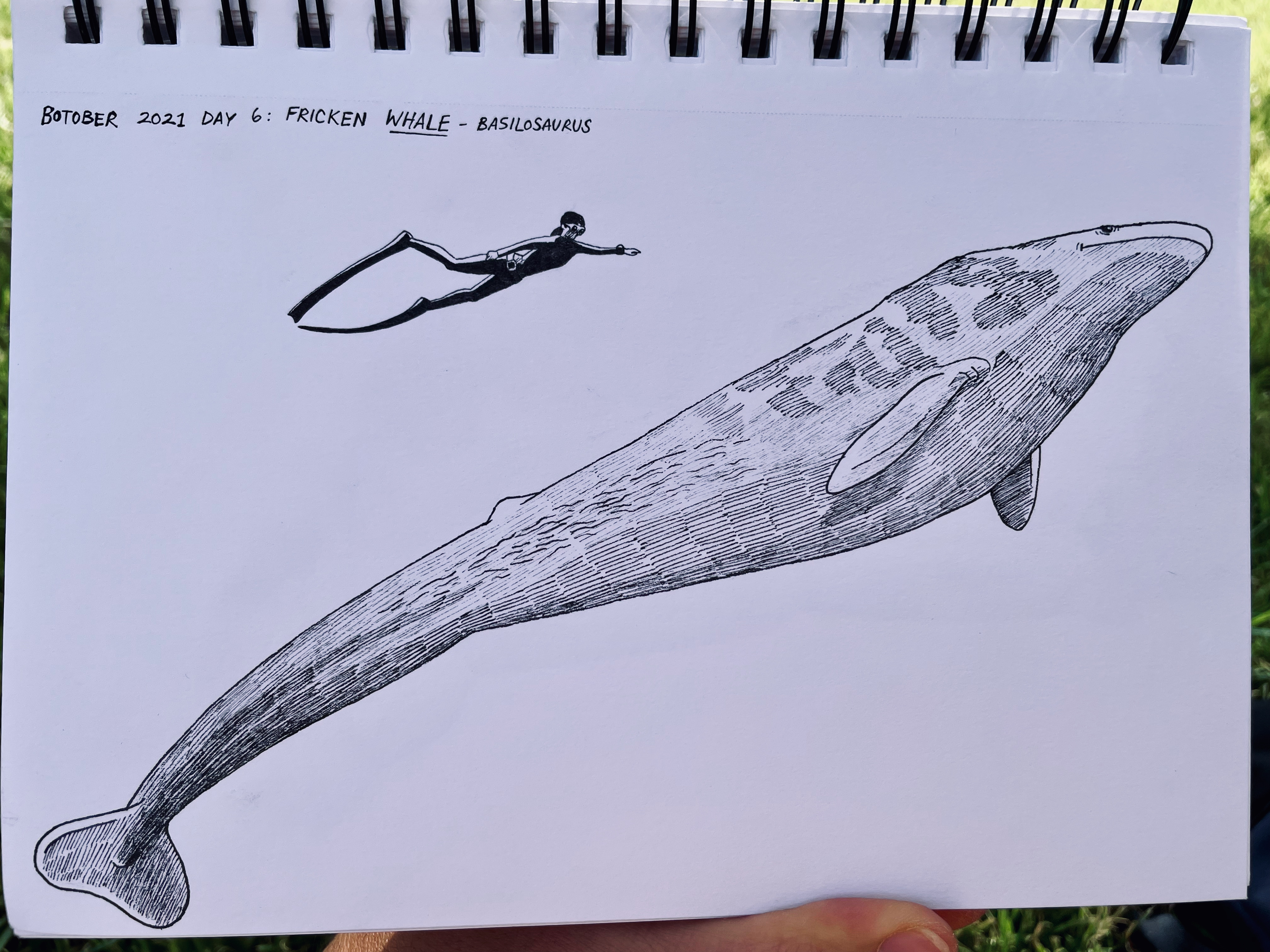To be honest, I was quite uninspired by this year’s Inktober prompts–crystal, suit, vessel, knot, and other vague, hard-to-relate-to-dinosaurs words–and have been busier lately than the last couple of years, so I wasn’t planning to do Inktober this year. But then my friend sent me this list of AI-generated prompts.
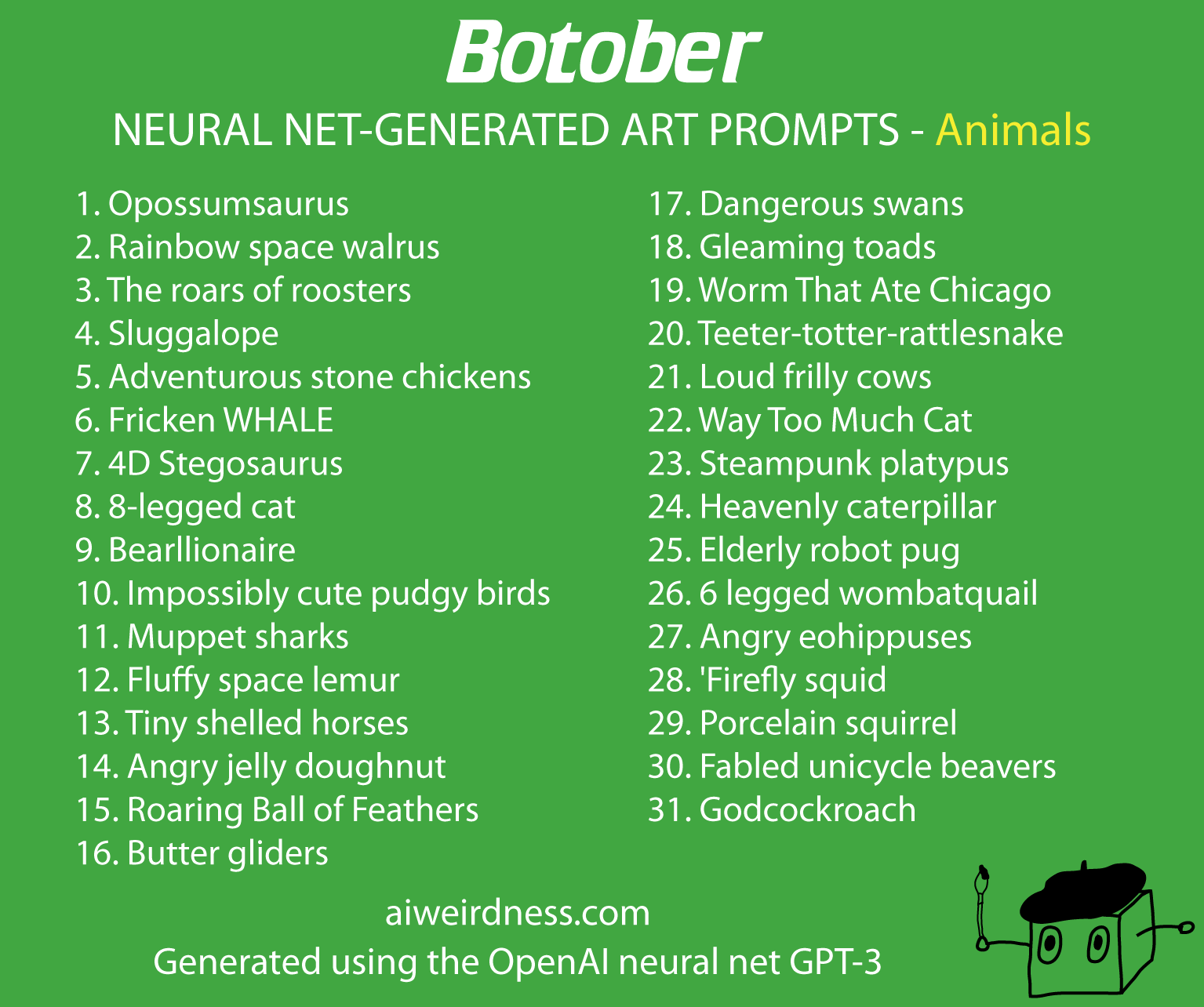
aiweirdness.com is a blog run by Janelle Shane, a neural net hobbyist with a great sense of humor. I’ve been following her blog since she had her neural net generate guinea pig names and recipes in 2017. So to do a version of Inktober she created is doubly exciting–because I’m a fan, and because these prompts are way more inspiring than the Inktober ones due to their odd specificity.
I started this one a bit late, so I don’t have 20 entries yet, even though it’s the 20th. But I’ll keep updating this post as I complete more prompts, so check back for more!
Without further ado, let’s jump into this silliness.
Day 1: Opossumsaurus
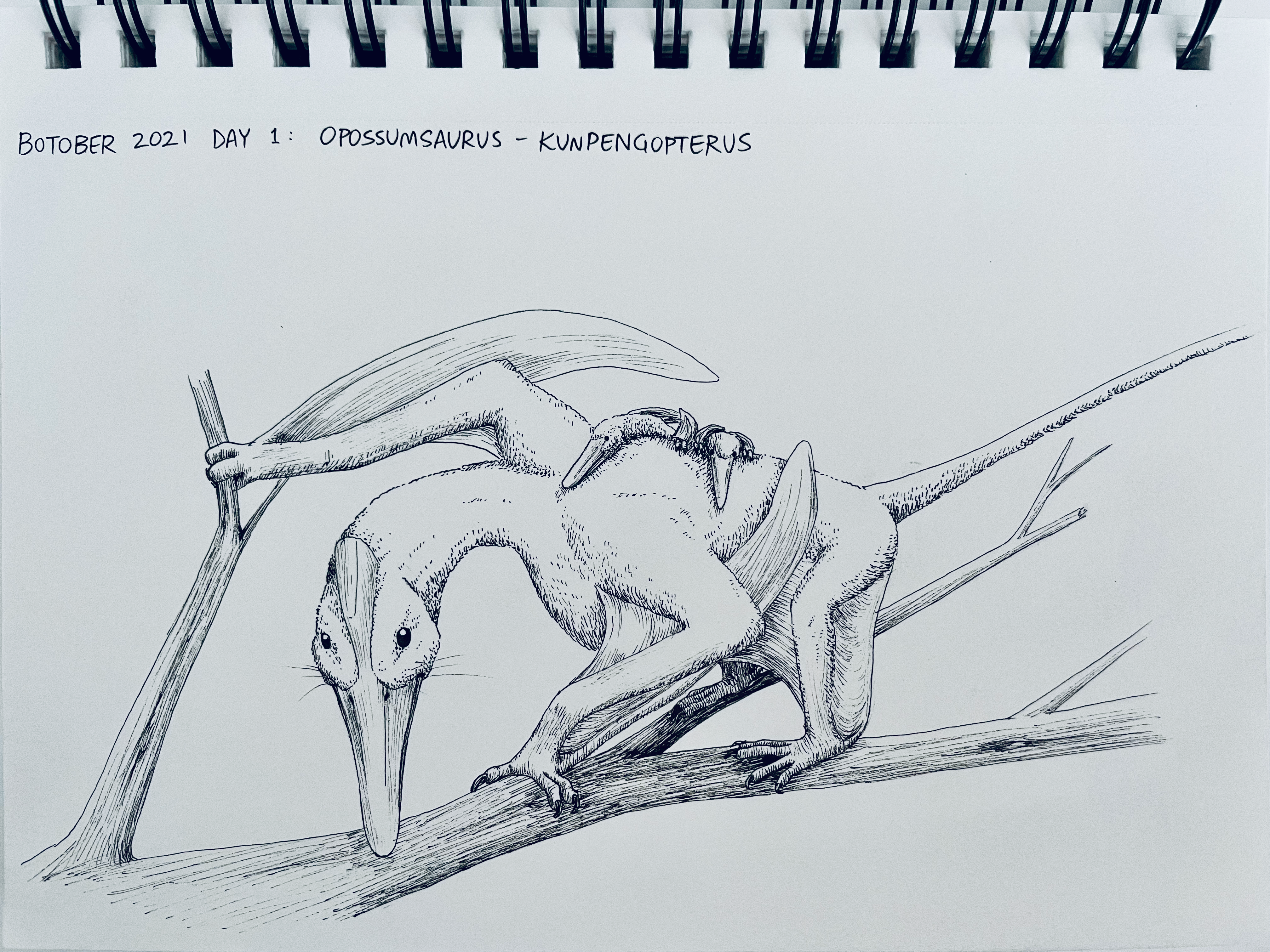
The discovery of a new species of Kunpengopterus, a small transitional pterosaur from the Middle to Late Jurassic of China, made a big splash in April of this year because it’s the first pterosaur known to have had opposable thumbs. Many artists quickly threw their hats in the ring with depictions of the creature swinging from branches like a monkey, or climbing large trunks like a squirrel, but so far I haven’t seen any with an opossum-like habit. I think it fits quite well. There’s no evidence that any pterosaurs practiced parental care (in fact, there’s indirect evidence against it: flaplings would’ve been precocial, able to fly shortly after hatching, which is inversely related to degree of parental investment) but in every family there’s a black sheep, so here we are.
Day 2: Rainbow Space Walrus
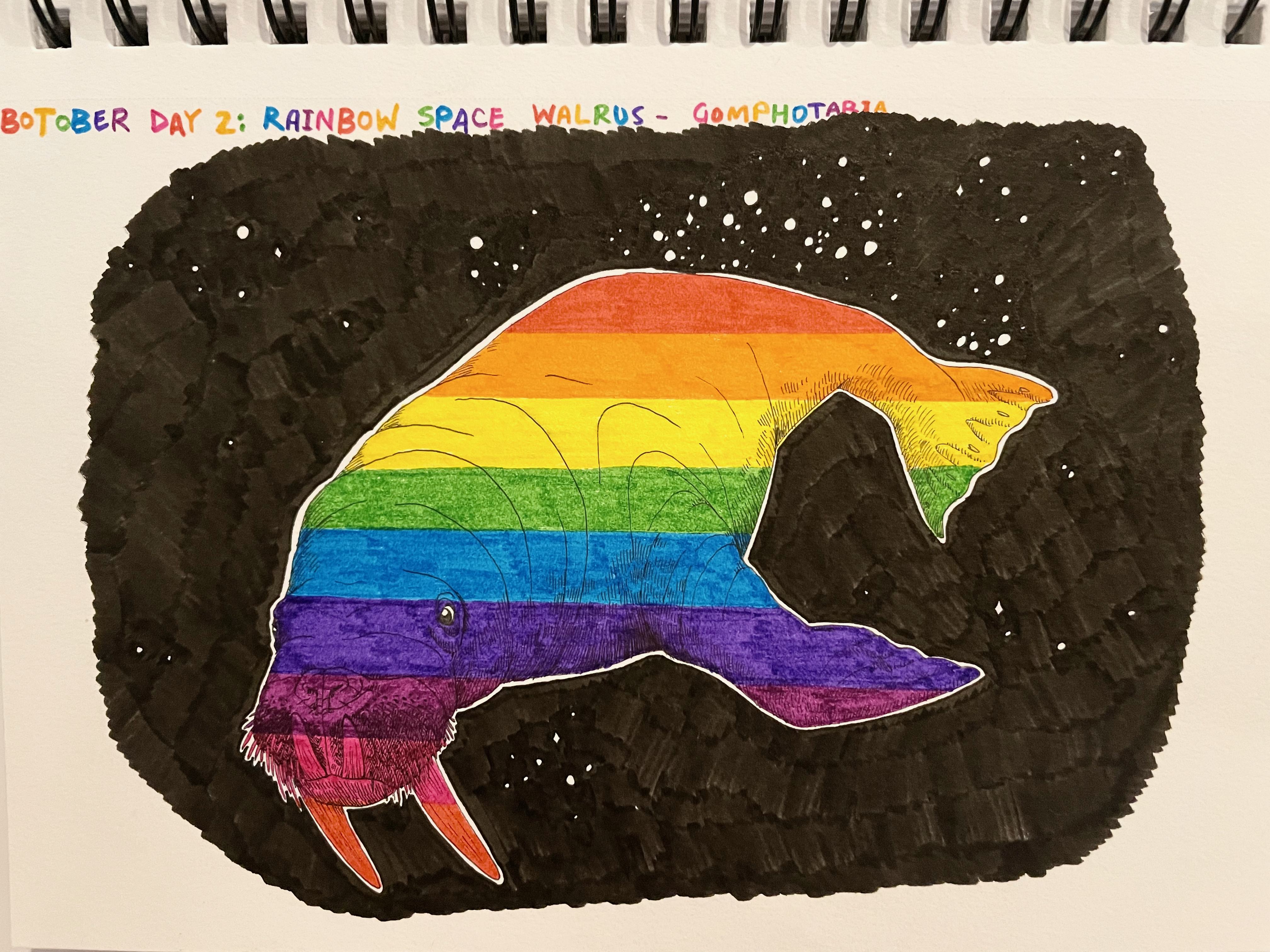
This one is pretty self-explanatory. The walrus shown is the four-tusked walrus Gomphotaria, from late Miocene California. It used its four big teeth to crack shells, unlike the modern walrus, which only uses them for fighting other walruses.
I’m a little disappointed in how dark my markers are. It obscures some of the detail in the face.
Day 3: The Roars of Roosters
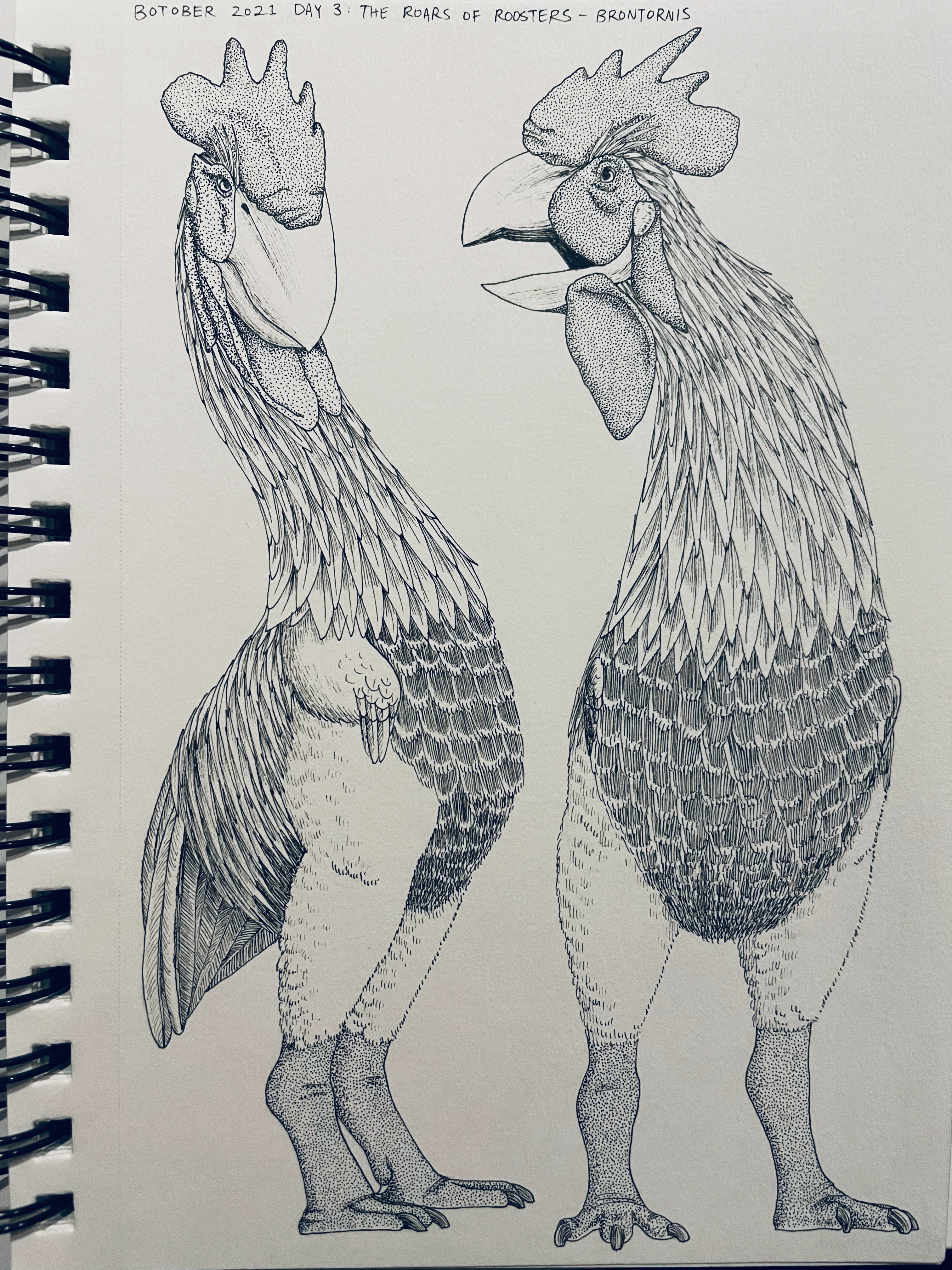
The Internet seems divided on whether you can call the males of non-chicken fowl “roosters” or not. I went with yes, and drew the huge galloanseran, Brontornis, in the plumage of roosters. For more info on this bird and other extinct giant flightless birds, see last week’s post! The roars of roosters…annoy other roosters.
Day 4: Sluggalope
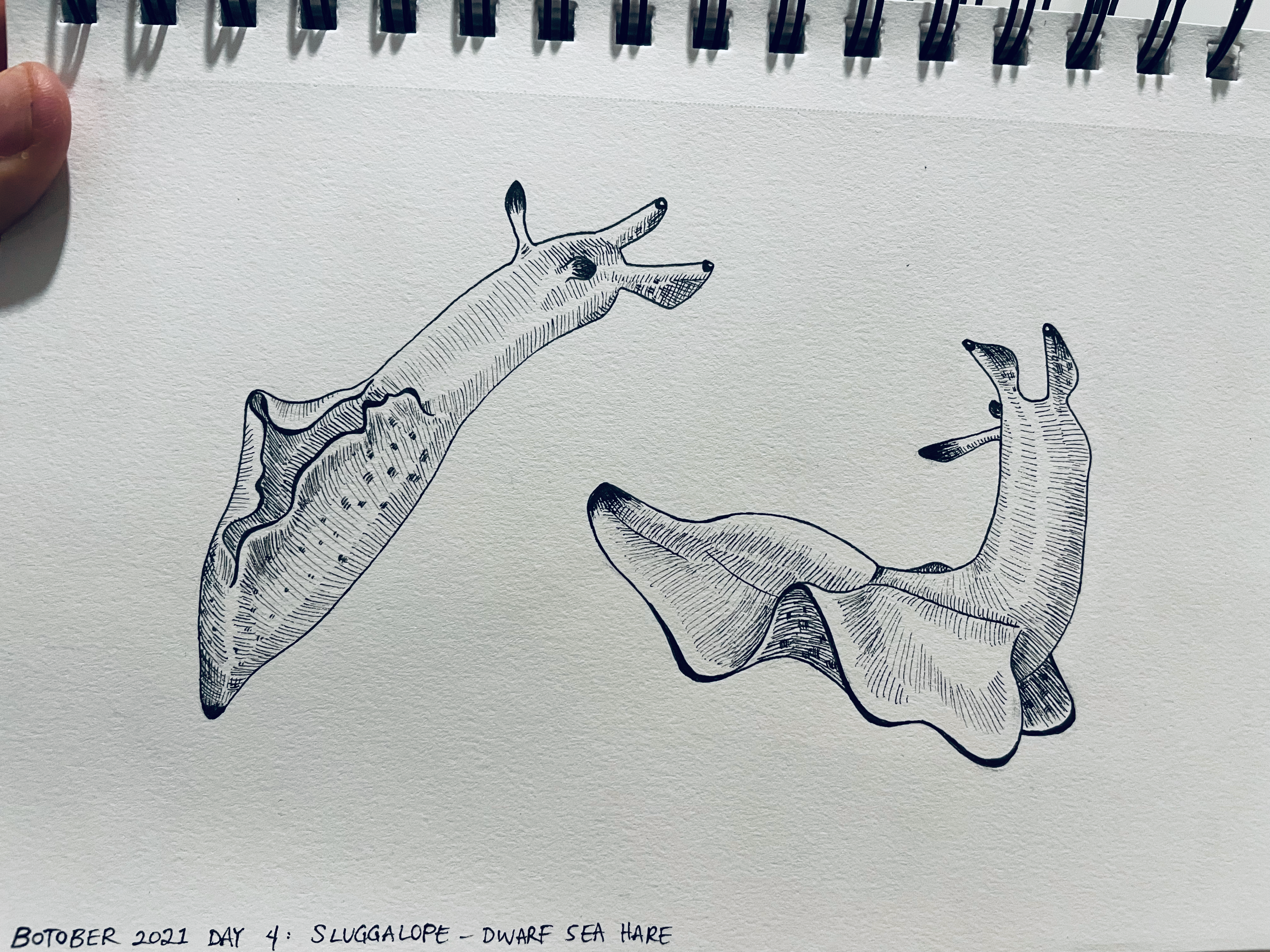
Did you know there’s a type of sea slug called a sea hare, so named because of its bunny-ear-like smelling organs on the back of its head, which can reach weights of up to 14 kg (30 lbs), produce bright pink or purple toxic ink, and swim gracefully through the water using winglike parapodia? Neither did I, until I started researching types of slugs in search of the most acrobatic and horned to act as my sluggalope. Sea hares are gastropods most closely related to the sea butterfly, another very strange type of organism you should definitely look up. The sea bunny, which you may have heard of, is actually a gastropod in the nudibranch family, and is not a sea hare.
These are dwarf sea hares (Aplysia parvula), though they also come in “ragged,” “shaggy,” and “walking” varieties, among others. I don’t know much about invert anatomy, so I hope I did them justice.
Day 5: Adventurous Stone Chickens
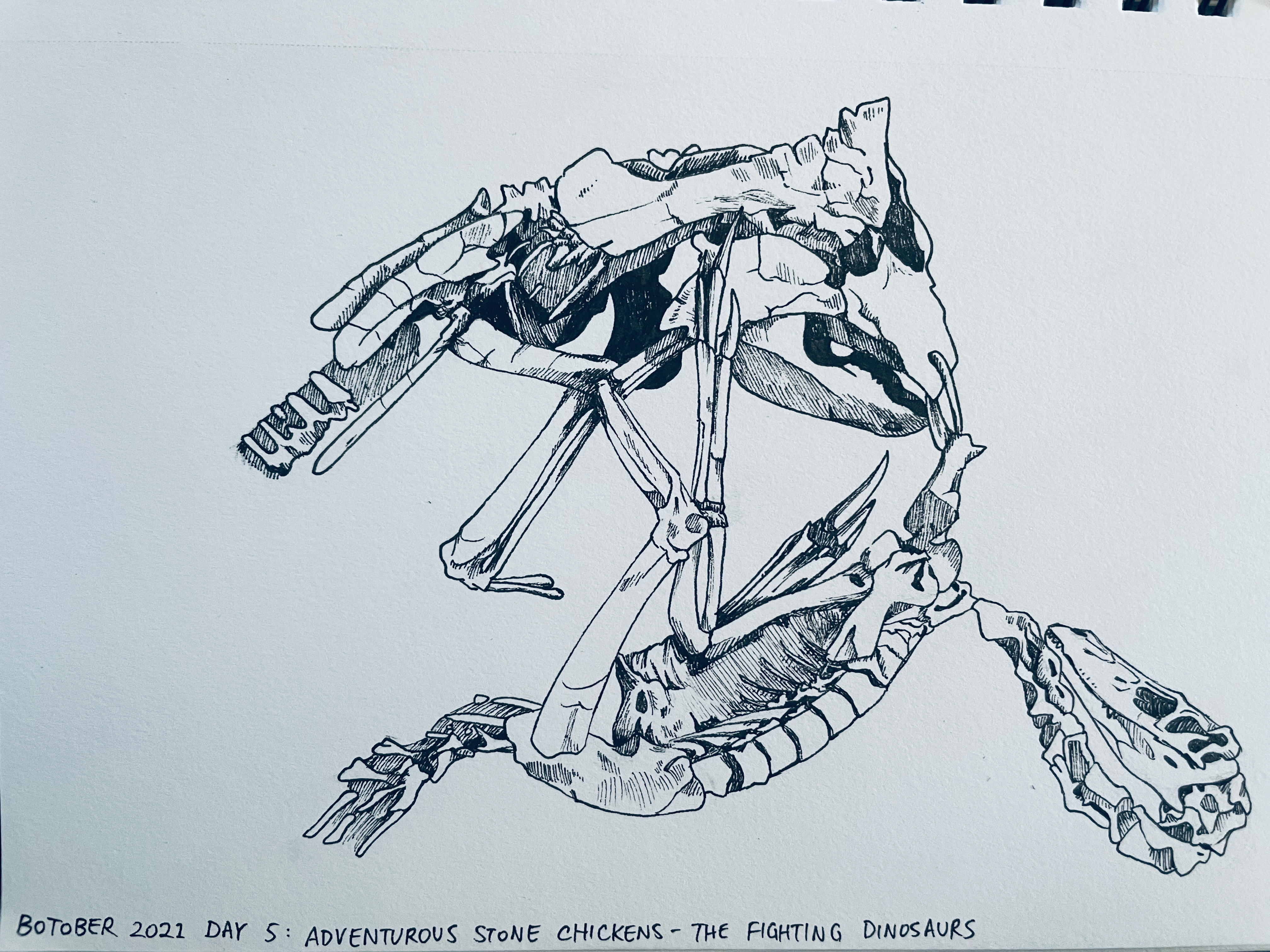
If I wasn’t doing a paleo focused Inktober, I’m not sure how I would’ve approached this prompt. How does one make stone chickens appear adventurous? Luckily, the paleontology world had a ready-made subject: the Fighting Dinosaurs. This is probably the best fossil ever discovered: a nearly-complete Velociraptor locked in mortal combat with a nearly complete Protoceratops. The ceratopsian is biting the raptor’s arm, and the raptor has its sickle claw up in the herbivore’s throat. How they died in this pose is debated: perhaps they were crushed by a collapsing sand dune, or fell into a lake and continued fighting til they drowned, or perhaps the pose is just a coincidence and they were buried hours, days, or months apart.
Adventurous: fighting something in your own weight class to the death is quite adventurous. Stone: fossils are created when minerals replace bone tissue, turning the bones into stone. Chickens: Velociraptor is closely related to birds, and is about the size of a turkey. Protoceratops is a bit further out, but it’s still on the bird lineage (and even closer than previously thought, if the Ornithoscelida hypothesis is correct).
Day 6: Fricken WHALE
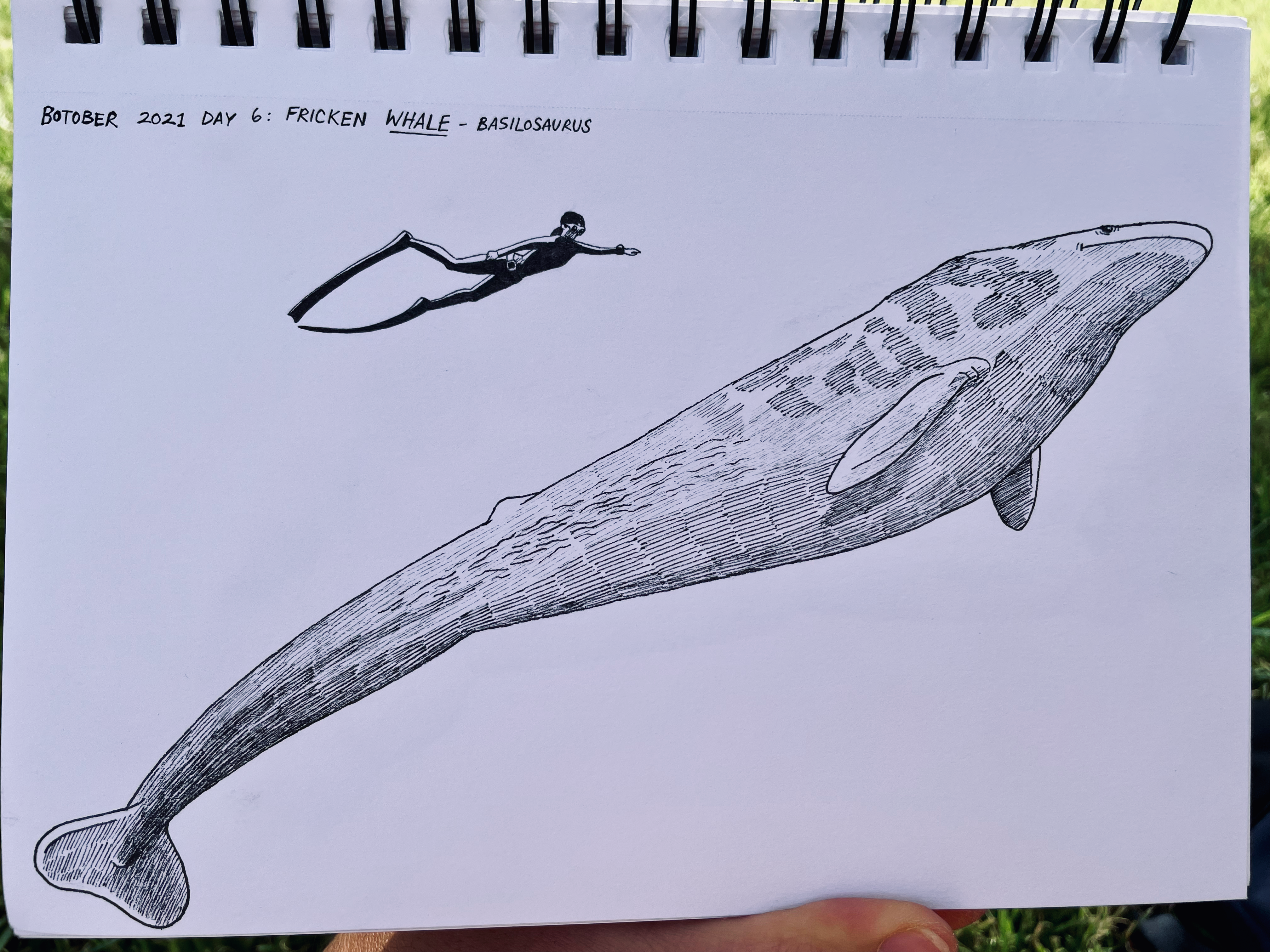
There’s an artist I like who has a series called “Diving With Sea Monsters” in which a time-traveling human diver swims with and photographs various large prehistoric sea creatures. Surprisingly, he’s never done one with the famous longwhale, Basilosaurus, so I thought I’d take a stab at it. See my post on whale evolution for details on why it was so dang long!
Day 7: 4D Stegosaurus
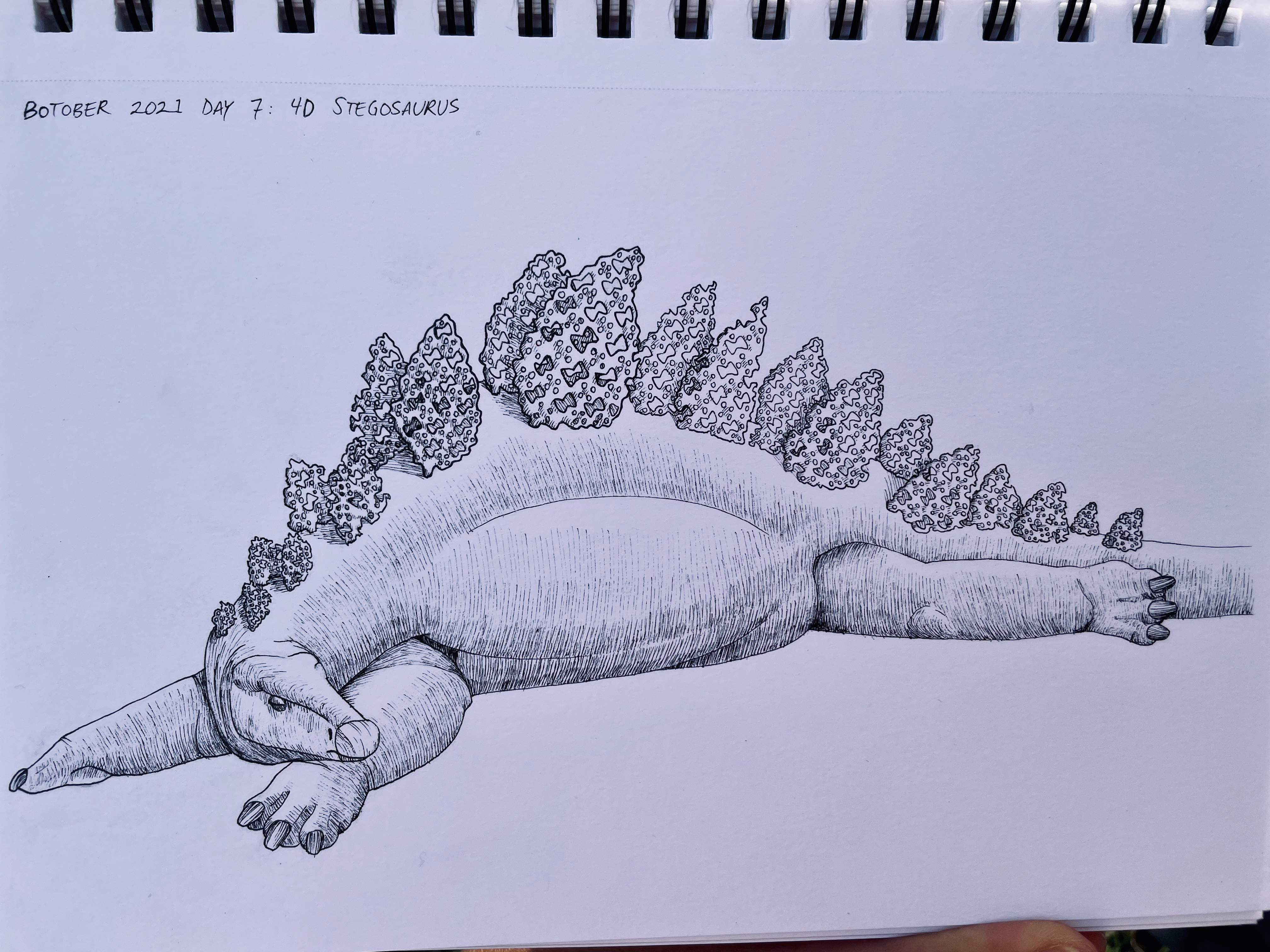
The obvious interpretation of this prompt probably would’ve been something like drawing the plates as hypercubes. Instead, I went for 4DFWD lattices.
Incidentally, I’ve drawn a Stegosaurus in approximately this pose before, two years ago for Inktober 2019. I’m glad to see how much I’ve improved since then!
Day 8: 8-legged cat
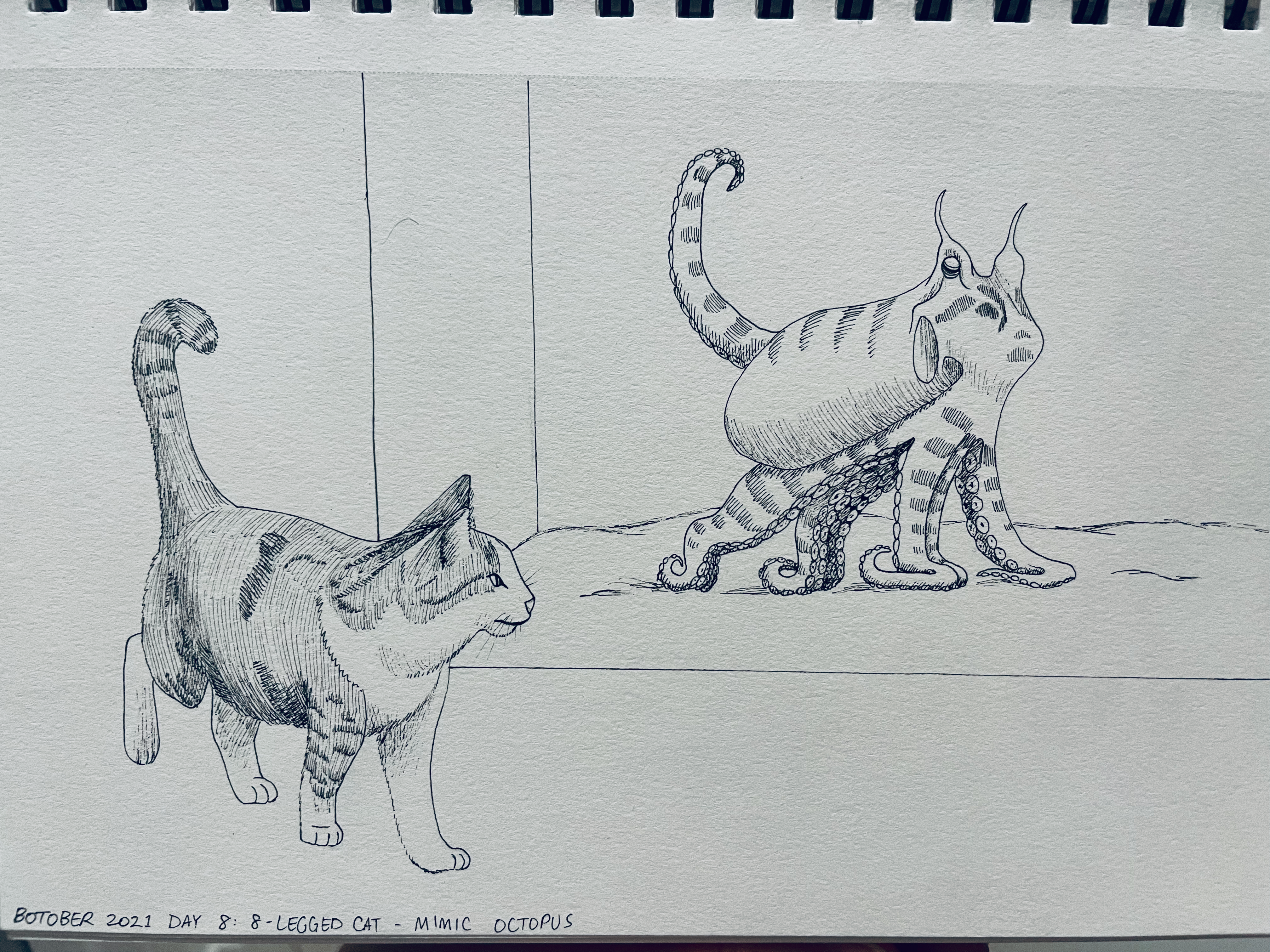
The remarkable little Indopacific mimic octopus is known to impersonate a variety of creatures in the wild, including sea snakes, lionfish, flatfish, stingrays, tunicates, and more. Who’s to say it couldn’t learn ‘cat’ if given the chance?
Day 9: Bearllionaire
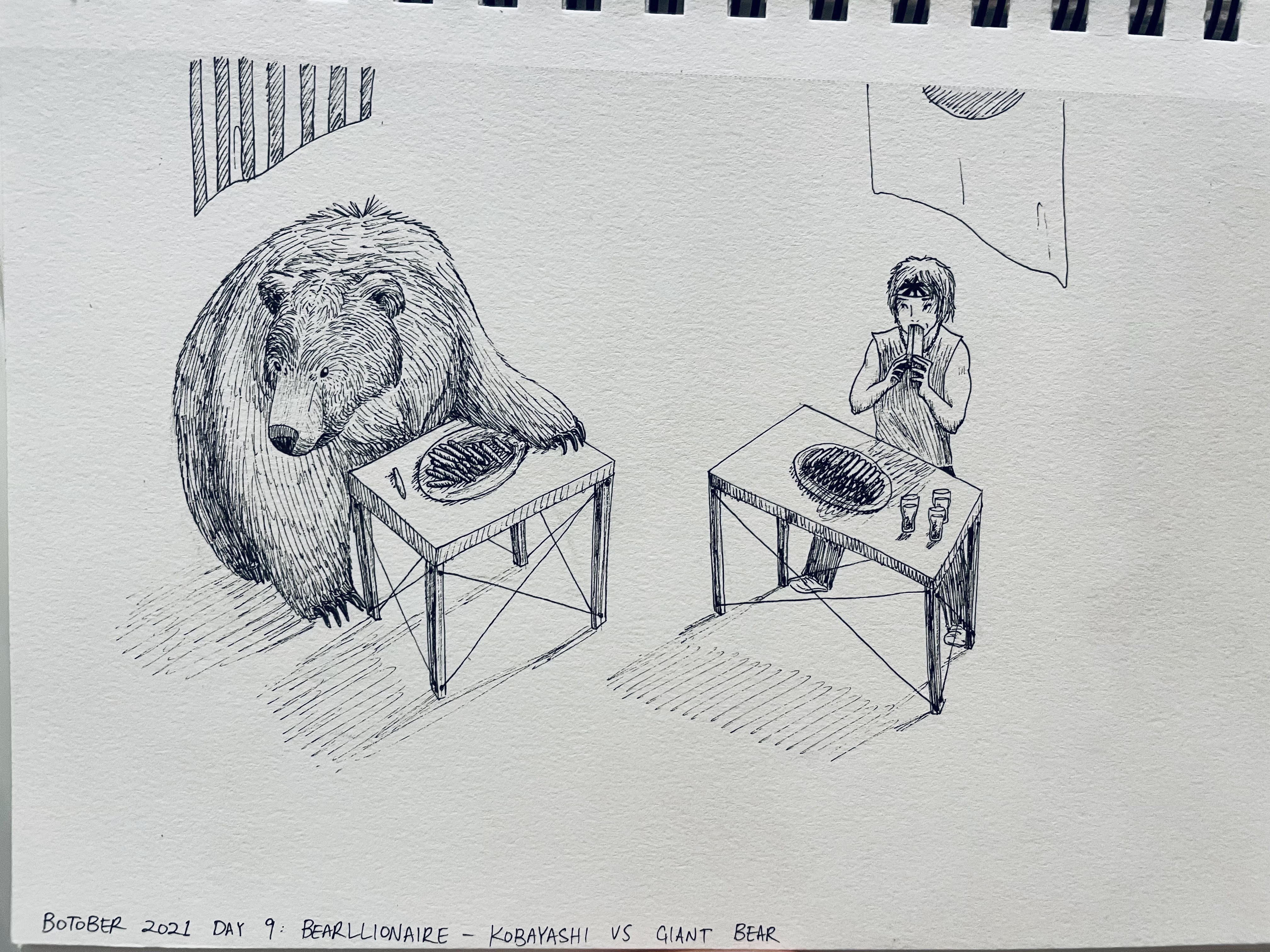
In what was perhaps the high point of American reality television, professional eater Takeru Kobayashi (representing Japan) squared off against a Kodiak bear (representing America, of course) to see who could eat 50 hot dogs faster. Kobayashi put up an impressive 36 by the time the bear was finished. The following segment involved 20 midgets competing with an elephant in a tractor pull. Are you not entertained?
Day 10: Impossibly Cute Pudgy Birds
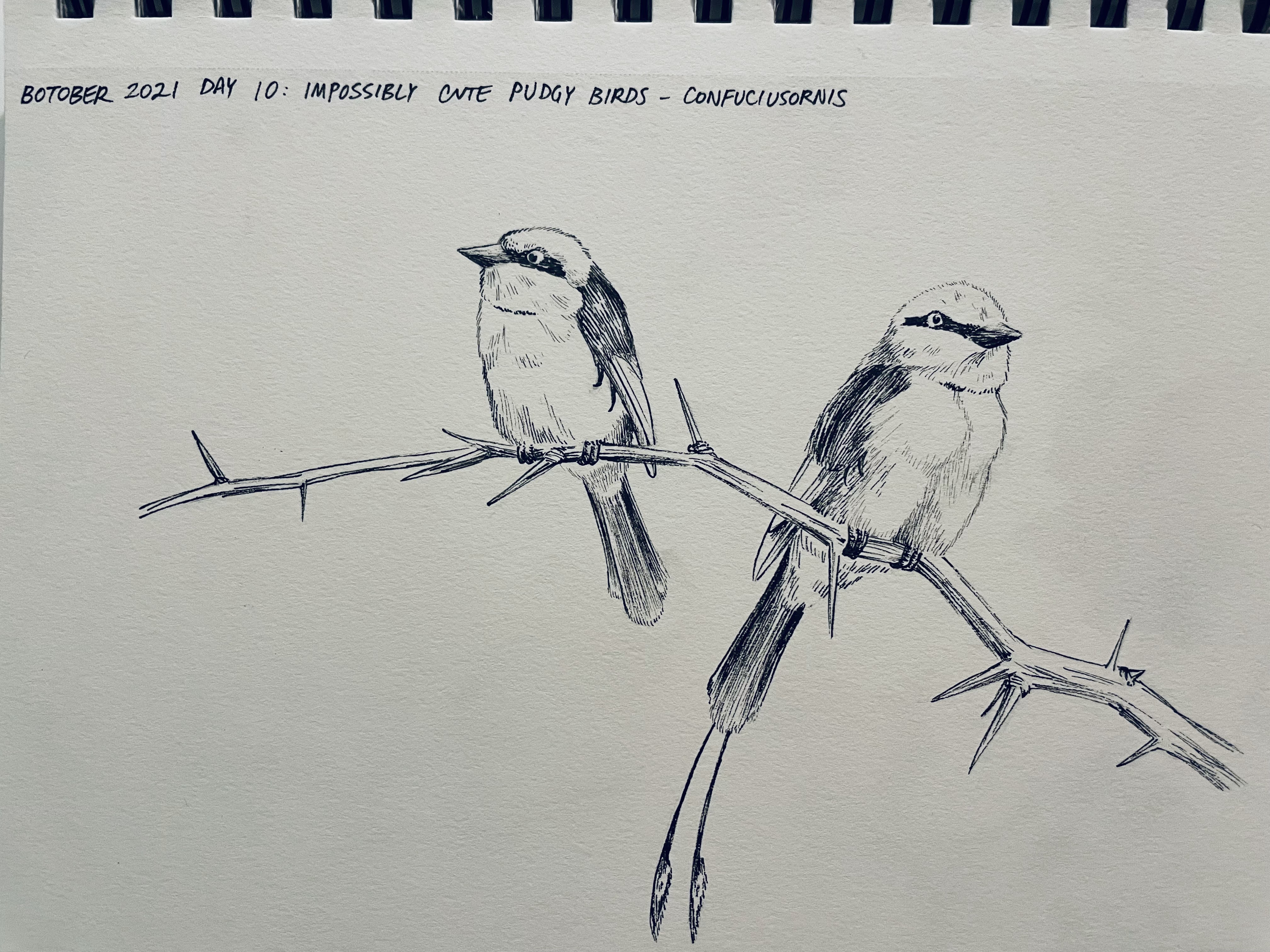
Somehow my attempt at “impossibly cute” looks more like a domestic dispute. Anyway, here’s Confuciusornis, an Early Cretaceous bird from the Yixian Formation of China that was probably not a very graceful flier, but was superabundant in its environment and is known from hundreds of fossils. The males had two long tail feathers, and we think their primary feathers were white while their upper-wing coverts were black.

